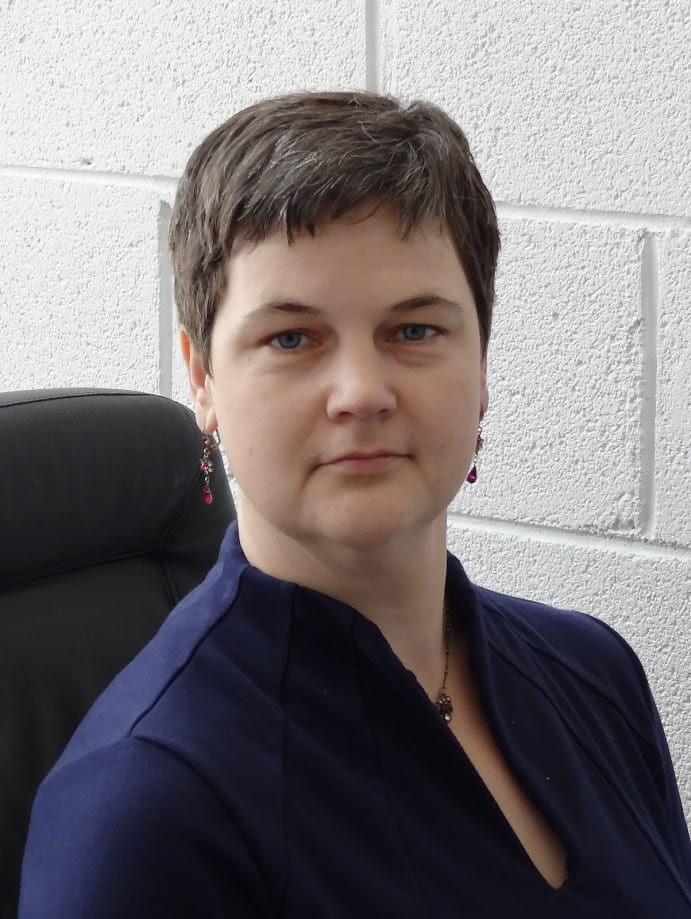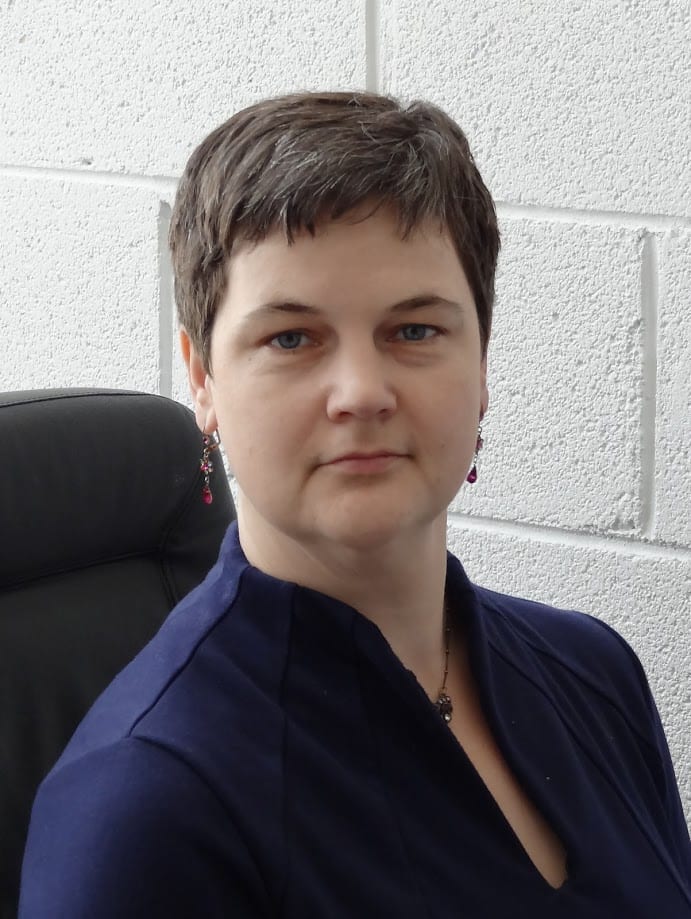この記事を日本語で読むには、こちらをクリックしてください。
Daiwa House Industry Co., Ltd. is developing a range of construction businesses, not only in single-family house building as seen in TV commercials, but also rental housing, commercial and distribution facilities, medical care, and nursing care facilities. Behind these promising developments is the enthusiasm of young employees and site managers, and the “Digital Construction Project” that supports them. For this issue, we interviewed Mr. Kazuaki Ishizawa, General Manager, Yokohama Branch, Kanto Construction Works Division of Daiwa House Industry, and Mr. Yoshinori Shimizu, who is working in Construction Works Department I in the same division. We asked them about the present and future utilization of PlanGrid
Construction Business that Leads Daiwa House Industry
Daiwa House Industry is diversifying its business, from construction to the management of single-family homes, condominiums, commercial and distribution facilities, hotels, and other areas. The Kanto Construction Works Division led by Mr. Kazuaki Ishizawa is in charge of commercial and business facilities, which means that it engages primarily in the construction of distribution facilities, stores, elderly care facilities, and hospitals. It is one of the leading divisions within Daiwa House Industry. The huge number of construction units underlies the strong performance of this division.

“As far as I know, when compared with other construction companies, our company constructs a huge number of buildings. I think one of the reasons for this is that our contract amount per building is more affordable than other companies. On the other hand, even while constructing a large number of buildings, we ensure that we are always able to deliver consistent quality to our clients.” (Mr. Ishizawa)
In order to consistently deliver high-quality buildings to our clients, it is certainly important that individual workers improve their skill levels through experience. However, from the perspective of the company as a whole, instead of depending on the technical capabilities of individuals, the company believes that the power of digital technology is important in terms of developing technical expertise.
Going forward, in order to continue our successful development as a company, organizational technological capabilities should be emphasized over individual technical abilities. —Mr. Kazuaki Ishizawa
“Going forward, in order to continue our successful development as a company, organizational technological capabilities should be emphasized over individual technical abilities. ‘Digital Construction Project’ started with this concept in mind under the direction of the President and CEO. The use of technology and the standardization of these techniques lie at the heart of this project.” (Mr. Ishizawa)
Autodesk, with whom Daiwa House Industry maintains a strategic partnership, introduced PlanGrid to Mr. Ishizawa, who was assigned as a project member, as one solution to promote the digitalization of construction sites. Mr. Ishizawa’s impression of PlanGrid was that it seemed to be “a very promising and deep solution.”
“PlanGrid enables us to inspect and check the site, store the site conditions, and immediately share and view the necessary information with all the concerned parties. Furthermore, it enables us to send necessary information to the people in charge both in and outside the company in a timely fashion. I immediately felt that these functions could be applied to a wide variety of jobs.” (Mr. Ishizawa)
Leading to the improvement of future building quality
Mr. Ishizawa initially thought about using PlanGrid to perform completion inspections, which are carried out before a building is handed over to the client. While learning more about PlanGrid, however, he realized that it might not only be useful for quality inspections of completed buildings, but also for overall quality checks, which include checking and recording site conditions obtained from safety inspections and patrols.
“Of course, such inspection operations are routinely conducted. However, each inspection operation has sheets in different formats and is conducted by different departments/sections. I thought that all of these differing formats and data collected by different departments/sections might be able to be coordinated in using PlanGrid.” (Mr. Ishizawa)
Mr. Ishizawa then instructed several members including Mr. Yoshinori Shimizu of the Kanto Construction Works Division to start initiatives for the practical utilization and the introduction of PlanGrid into sites in cooperation with Autodesk. Mr. Shimizu, who is working as site manager, says that he saw the immense potential of PlanGrid from the moment he was introduced to it.
“When using conventional paper documents, sharing information and decision-making took a long time. With PlanGrid, on the other hand, we can share information about the root causes of defects or other findings very easily and quickly if we have a tablet on a site.” (Mr. Shimizu)
When inputting data for the first time using PlanGrid, he realized that PlanGrid would help in on-site decision-making and improve work efficiency, and that it would possibly result in a substantial reduction of time and labor.
“The knowledge of the engineers working on their respective sites will be gathered and stored in PlanGrid, and by doing so, such data can be used effectively in the future.” (Mr. Shimizu)
By utilizing PlanGrid in practice, Mr. Shimizu realized a number of other advantages. He noticed its “usability” at construction sites where people are extremely busy.
“For example, without going to all the trouble of preparing an inspection sheet, the preparations for inspections and safety/site patrols can be completed by inserting a single drawing into PlanGrid. I only need to visit the site and input the site information and photos in the stamps that are on PlanGrid. I do not need to go to the trouble of returning to my office to compile the sheet, and I can finish the work on site. Photos taken on your smart phone can be uploaded immediately. Just by placing the photos in their proper positions on the drawing, there is no longer any needs to send an e-mail to someone else. All the project members can share this information immediately.” (Mr. Shimizu)
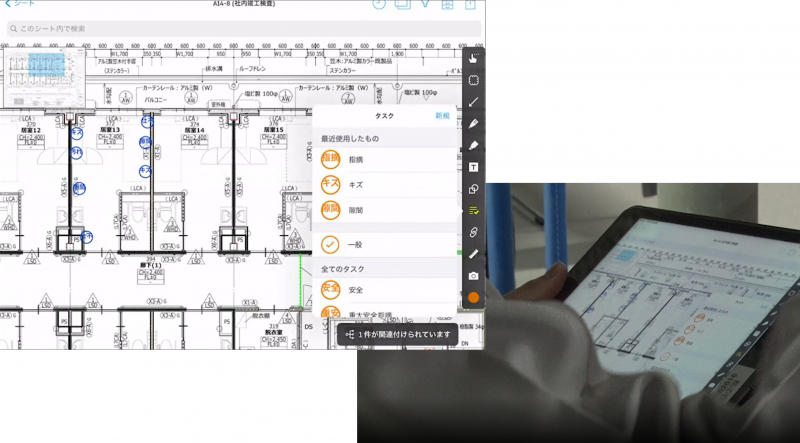
Through the introduction of PlanGrid, workers can easily find whether a task has already been finished or is still in progress simply by checking the stamp. They can uniformly manage tasks such as site patrols and safety checks, which would normally require a number of different people to visit the site. Furthermore, there is no need to visit the site; instead, they can check the tasks from the office, meaning that work efficiency will dramatically increase, which will also lead to a drastic improvement in the quality of construction.
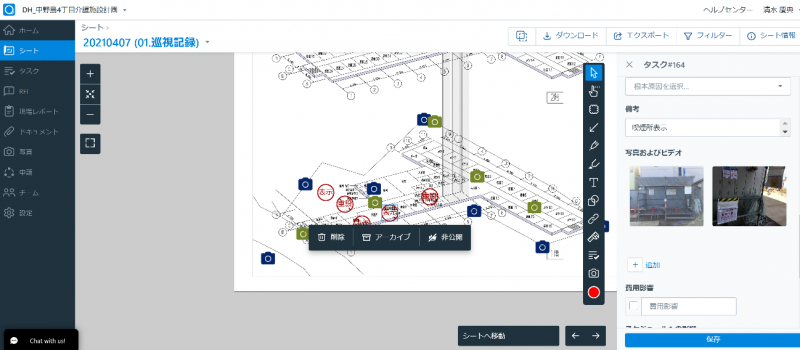
“The fact that we can share findings, technical information and prevent problems in advance is significant. This will lead to improvements not only in near-term performance but also in future building quality, which today’s young employees will provide.” (Mr. Shimizu)
Utilization of PlanGrid is an investment in the future
The range of uses of PlanGrid is continually expanding. At present, PlanGrid is being promoted for use not only in safety patrols and a variety of inspections, but also for use during pre-construction site investigations.
“Before a site manager is assigned, a supervisor conducts a site investigation. The supervisor investigates the access of vehicles, the conditions of neighboring buildings and surrounding fences, and the infrastructure. I had the idea that PlanGrid might also be useful during such investigations, and therefore, I asked Shimizu to customize PlanGrid so that not only site managers but also supervisors would be able to use it effectively. Preparations for this application of PlanGrid have already begun.” (Mr. Ishizawa)
At present, Mr. Shimizu is heading up the widening use of PlanGrid, and the number of PlanGrid users is continually increasing. However, Mr. Ishizawa is not satisfied with the current state. Mr. Ishizawa hopes for a time when everyone on site will be able to use PlanGrid and will continue steady efforts toward that goal.
“At present, all the members who have a relatively high level of technological knowledge are tackling how to utilize PlanGrid; however, enabling this technology to reach all employees is our next challenge. I think it is necessary that this technology be used by a larger number of workers.” (Mr. Ishizawa)
By gathering and storing the knowledge of different people [in PlanGrid], younger or less experienced site managers can refer to this information easily by searching for a keyword, allowing them to deal with problems quickly on-site. —Mr. Yoshinori Shimizu
According to Mr. Ishizawa, he set a target for the branch offices he manages in Kanagawa, Chiba and Ibaraki Prefectures and made at least two people in each office use PlanGrid on-site. They also have opportunities to share opinions with other members.
“If members who use PlanGrid on the site steadily continue to share their experience with other members, the use of this technology will spread quickly across the company. I am currently working with Autodesk to promote the general use of PlanGrid across the company.” (Mr. Ishizawa)
Mr. Shimizu says that customization (preparation) will be essential to develop the use of PlanGrid horizontally across construction sites.
“We will thoroughly customize PlanGrid so that it will become very simple to use. At first, we will try to reach a level where everyone feels that ‘a job can be completed using only the tools on hand’. By gathering and storing the knowledge of different people, younger or less experienced site managers can refer to this information easily by searching for a keyword, allowing them to deal with problems quickly on-site. Used in this way, the value of PlanGrid will be easily understood by the workers on-site.” (Mr. Shimizu)
Mr. Ishizawa says that he thinks that the utilization of PlanGrid is an investment for the future.
“Up until now, the output differs depending on the person in charge, and this has been covered by the whole staff to maintain a consistent level of quality. Going forward, I am sure that by continuing to accumulate data in the cloud, integrating that data and drawing on it as information, we will definitely be able to increase not only quality stability, but further increase the quality level of staff.” (Mr. Ishizawa)
On the other hand, while Mr. Ishizawa admitted that there are concerns about the future role of technical skills in the construction industry, he says that balancing technology and human skills is the key to moving forward.
“The technical skills that are learned by sweating over your work on-site and by sharing experiences with other skilled construction workers are also very important, because we work with people. We may be able to create a good product using digital technologies, however, we cannot establish a trusting relationship without skilled construction workers. I think that only our people who worked on sites while using digital technology are in the end able to communicate accurately with skilled construction workers. While teaching PlanGrid is important, we should not neglect other kinds of teaching. I do not believe that the Japanese construction industry will completely change in the next five to ten years. However, I hope that the generation following Shimizu will be able to work more easily and enjoyably, while at the same time carrying out consistently high-quality work for our clients. I am engaging in this challenge with considering such thoughts.” (Mr. Ishizawa)
⠀
⠀
瞬時に共有可能な現場の知見を蓄積することで、まだ見ぬ未来の建物の品質を担保する
TVコマーシャルでおなじみの戸建住宅のみならず、賃貸住宅や商業施設・物流施設、医療・介護施設など、多様な建築事業を展開する大和ハウス工業。その好調の裏には、若手・現場所長たちの情熱と、それを下支えする「デジタル・コンストラクション・プロジェクト」の存在がありました。今回は同社横浜支社関東工事部統括部長である石澤一晃氏と同部工事第一部で活躍する清水慶典氏にインタビュー。PlanGrid活用の現在と未来についてうかがいました。
大和ハウス工業を牽引する建築事業
戸建住宅や分譲マンション、商業・物流施設、ホテルなどの建設から運営まで事業の多角化を進める大和ハウス工業。石澤一晃氏が率いる関東工事部は、商業施設部門・事業施設部門、すなわち物流施設や店舗、高齢者施設などのビルの建設を手掛ける部門。現在の大和ハウス工業を牽引する事業部門のひとつです。その好調要因を支えているのが、圧倒的な建設戸数だといいます。

「恐らくどの建設会社と比べても、圧倒的な棟数を建設しています。他社に比べて1棟あたりの受注金額が安価であるという点が理由の一つとしてあげられると思いますが、裏を返せば棟数をこなしつつ、いつでも安定した品質をお客様に提供するための努力を重ねているということでもあります」(石澤氏)。
安定的に高品質な建物をお客様に提供するためには、個人が経験を積んでレベルを上げることが重要だという意見もあるのは確か。しかし会社全体として考えると、個人が持っている技術力に頼るのではなく、デジタルの力を重要な技術力のひとつとして捉えたといいます。
「むしろこれからは、会社として成功や発展を続けるために、個人の技術力よりも組織的な技術力の方が重要視されるべきです。そうした考えの元、社長の肝煎りでスタートしたのが『デジタル・コンストラクション・プロジェクト』です。テクノロジーの力を活用して技術を標準化するという考えが根底にあります」(石澤氏)。
そのプロジェクト・メンバーとしてアサインされた石澤氏は、会社として戦略的パートナーシップを結んでいるAutodeskから、施工現場のデジタル化を推進するソリューションの一つとしてPlanGridの紹介を受けました。“とても未来のある、奥の深いソリューション”という印象を受けたといいます。
「現地を確認・チェックして、その状態を保存する、それを関係者全員ですぐに必要な情報を共有して見ることができる。さらには、タイムリーに社外や社内の担当者に必要な情報を発信できるという一連の機能が、様々な業務で応用できると直感的に感じました」(石澤氏)。
将来の建物の品質向上にも繋がっている
当初はPlanGridを、お客様に引き渡す前に実施する竣工検査に活用しようと考えていた石澤氏。ところが説明を聞いているうちに、完成した建物の品質検査もさることながら、安全の検査やパトロールなど、現場を確認し、記録を残すという、もっと大きな意味でのクオリティチェックに活用できるのではないかという発想になったといいます。
「もちろん、従来もそういった点検業務は実施されていました。しかし、各々の作業によってフォーマットが異なる帳票があり、担当部署も違う。今までは部署ごとにバラバラだった帳票やデータを、PlanGridを用いることで連携させていくができるのではないかと思います」(石澤氏)。
そこで石澤氏は、同じく関東工事部のメンバーである清水慶典氏を含む数人のメンバーに指示。Autodeskと共に、実用化、および現場浸透に向けての取り組みを開始。現場所長として活躍する清水氏は、PlanGridに出会った瞬間から、その可能性を感じ取ったといいます。
「従来の紙の帳票による運用では、担当者が持っている情報の共有や意思決定が決してスピーディーには行われてはいませんでした。ところがPlanGridであれば、現場にタブレットさえあれば非常に簡単に、しかも即時で、不具合の根本原因や指摘事項などの情報共有が可能となります」(清水氏)
初めてPlanGridを使って入力した時点で、現場における意思決定の一助となり、業務効率が上がる。時間や労力の大幅な削減に繋がる可能性があると実感したといいます。
「そして何よりも、それぞれの現場で活躍する技術者たちが持つ知見をPlanGridに集約し、蓄積することで、今後、そうしたデータを未来に活かすことができるのではないかと感じました」(清水氏)
実際に活用してみると、さらに様々なメリットを実感したという清水氏。多忙を極める現場の最前線における“使い勝手の良さ”に注目します。
「例えば、帳票をわざわざ作らなくても、PlanGridに図面を1枚入れれば、それで検査や安全、現場巡視の準備は終了します。現場に赴き、PlanGrid上に存在するスタンプに現地情報や写真などを入れてしまえば、わざわざ事務所に戻って帳票をまとめることもなく、その場で作業を終えることができます。写真もスマートフォンで撮影してすぐにアップロードが可能で、図面の場所に写真を置くだけで、誰かにメールで送る必要もなく、瞬時にプロジェクト・メンバーで情報共有が可能です」(清水氏)

PlanGridを導入することで、その作業が終了しているのか、継続しているのかが、スタンプひとつで見極めることが可能に。現場巡視や安全確認など、従来は複数の担当者が現場に足を運んでいた作業が、PlanGridを介して一元管理できるようになりました。しかもそれが現場に行かなくても、事務所で確認することができるため、業務効率は格段にアップ。それは工事の品質にも大きな影響を及ぼしているといいます。

「やはり、これまでの指摘事項や技術情報を共有し、事前に回避できるようになった点は大きいと思います。それは目先の成果だけでなく、現在の若年層が担っていく、将来の建物の品質向上にも間違いなく繋がっていくと思います」(清水氏)
PlanGridの活用は未来への投資
PlanGridの活用アイデアはさらに広がりを見せています。現在は、安全パトロールや様々な検査においてはもちろん、工事を実施する前段階の現地調査においても活用を進めています。
「現場所長が配属される前段階において、管理職による現場調査が行われます。車の乗り入れや隣の建物、周りの塀の状況やインフラなどの調査をしますが、それもPlanGridでできるのではないかと考えました。ですから、現場管理者だけでなく管理職も使いこなせるようカスタマイズしてほしいと、清水に依頼して運用準備を始めているところです」(石澤氏)
現在は、清水氏を中心に普及活動が進められ、PlanGridを活用する人員が増えつつある状況ですが、石澤氏は満足していません。石澤氏が目指すのは、現場の誰もがPlanGridを活用できる世界、そのために地道な取り組みを続けていくといいます。
「今はテクノロジーに対する知識レベルが比較的高いメンバーが取り組んでいますが、現場の担当者全員に普及したときにどうなるのかというのは、これからの課題です。まずはより多くの人財にこのテクノロジーに触れてもらうことが必要だと思っています」(石澤氏)
石澤氏が管掌する神奈川県、千葉県、茨城県の各事業所には目標を設定し、事業所内で必ず最低2人にPlanGridを実際に現場で使ってもらい、意見を共有する機会を持っているといいます。
「チャレンジしたメンバーが他のメンバーに広めていくという活動を地道に続けていけば、やがて会社全体に浸透していきます。そこは現在、Autodesk様と一緒になって考えながら進めている段階です」(石澤氏)
現場に水平展開するためには、カスタマイズ(下準備)が必須だと清水氏は言います。
「とにかく簡単に使えるよう徹底的にカスタマイズしていきます。まずは“そこにあるものを使うだけで、簡単にできる”と誰もが感じるようなレベルに持っていきます。色々な人の知識を収集し蓄積することで、若い現場管理者や経験の少ない現場管理者が、そのキーワードを選ぶだけで指摘事項を閲覧。現場ですぐに対処ができるようになれば、目に見える効果として、その価値を現場に理解してもらえるようになると思います」(清水氏)
そして石澤氏は、PlanGridの活用は未来への投資だと考えているといいます。
「これまでは、担当者によってアウトプットの違いがあり、それを皆でカバーして品質を保ってきました。これからは、クラウドにデータを蓄積し、繋ぎ、情報として引き出すということをくり返すことによって品質の安定化、いや品質が安定するとともに、担当者のレベルが高くなることは間違いありません」(石澤氏)
その一方で、“建設業界の技術力は本当にそれでいいのか”という懸念もあるというが、テクノロジーとヒューマニズムの両立がカギになるといいます。
「現場で汗水たらして建設技能労働者と様々なことを共有しながら身に付ける技術力もとても重要です。なぜなら、私たちは人と仕事をしています。デジタルで良品は作れるかもしれませんが、建設技能労働者たちとの信頼を作ることはできません。デジタルを駆使しながら現場でたたき上げられた人間こそが、結局、建設技能労働者とのコミュニケーションも正確に取れるのだと思います。PlanGridの指導も重要ですが、それ以外の指導もおろそかにできません。5年~10年という期間で日本の建設業が180度様変わりするとは思っていませんが、いずれ清水の後輩たちが楽になる、楽しく仕事をしながらお客様に価値を提供できるようになると期待しながら、今は取り組んでいます」(石澤氏)
The post Ensuring the High Quality of Future Buildings by Accumulating Instantly Shareable Site Knowledge appeared first on Digital Builder.
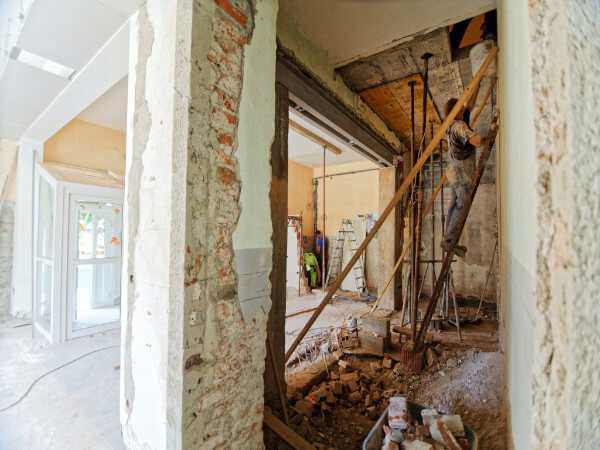

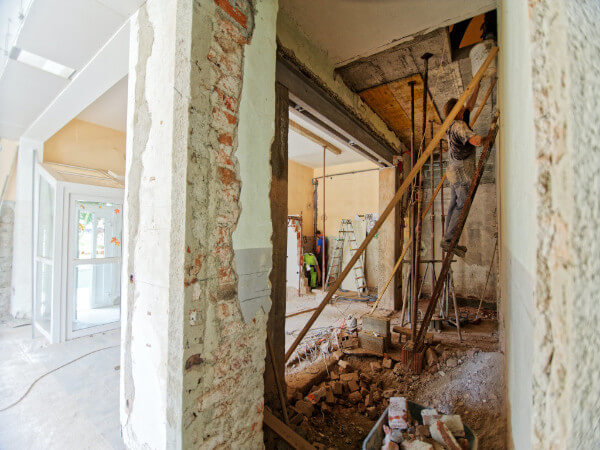


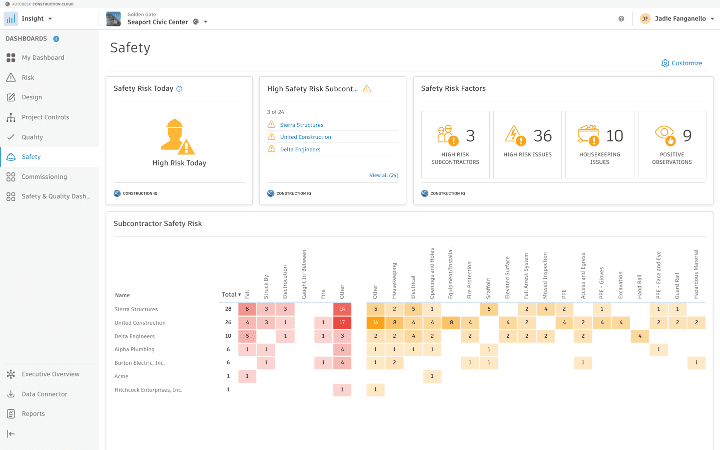
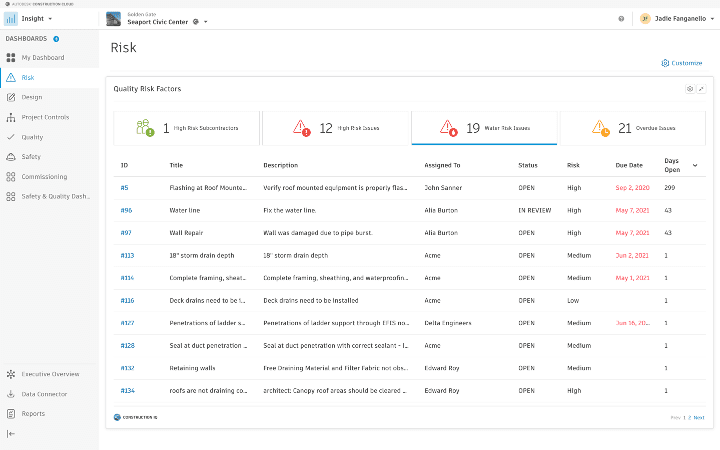
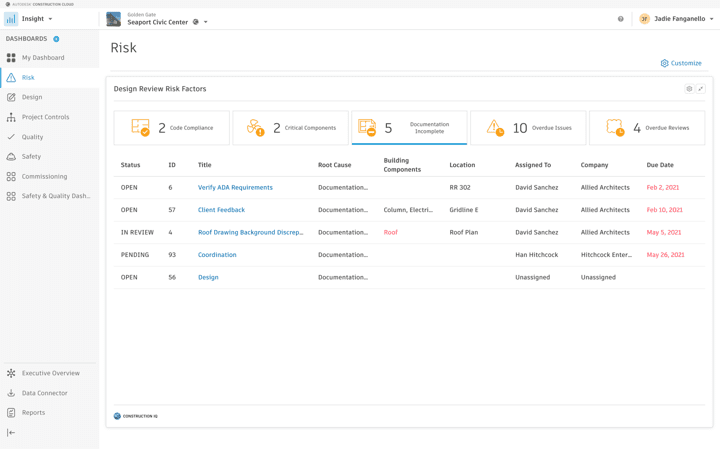
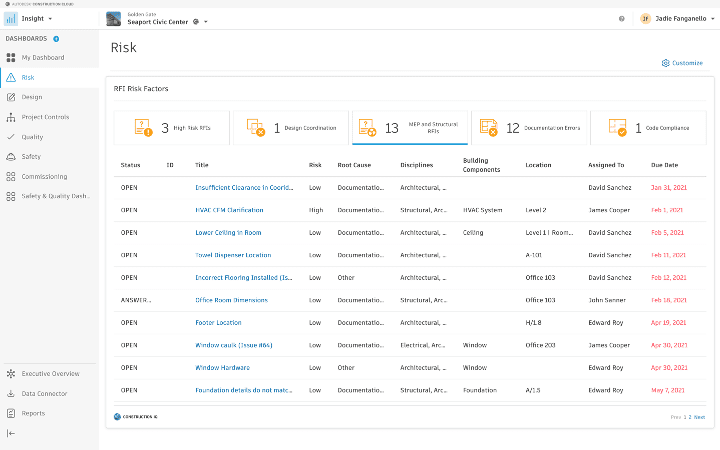
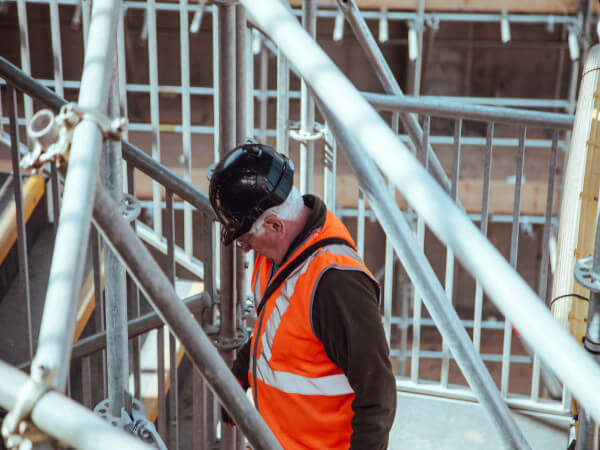
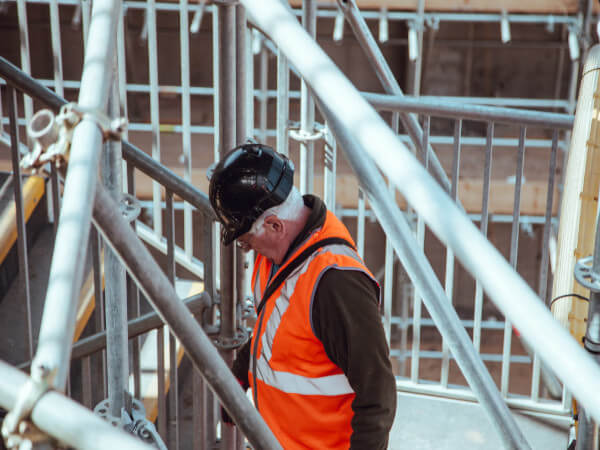
![Year over year growth, BuildingConnected data reveals top 15 cities with most new projects published [report]](https://www.dennis-construction.com/wp-content/uploads/2021/10/Year-over-Year-Growth-800x392-1.jpg)
![Top 15 cities, BuildingConnected data reveals top 15 cities with most new projects published [report]](https://www.dennis-construction.com/wp-content/uploads/2021/10/Top-15-cities-800x382-1.jpg)














